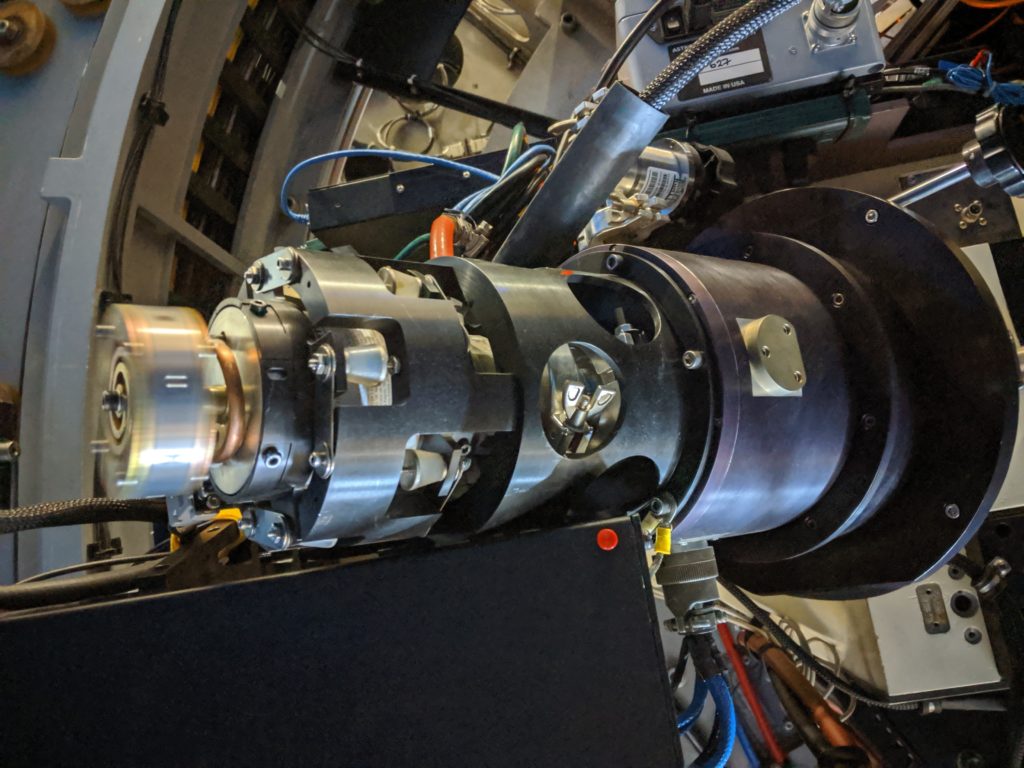The Current Way of Cooling Instruments
Entirely self-contained closed cycle coolers are now available for science instruments. They are used a TON on space missions (likely close to or over 100 at this point) and are highly effective still on Earth.
We use Sunpower Cryotel GT coolers, which are free-piston Stirling cycle coolers. They are rather complex and their function quickly devolves into the realm of specific thermodynamic principles, but I’ll try to simplify things.
• There are basically two moving parts inside the cooler: a piston, and a displacer. The two move together in such a way to move the working gas inside the cooler (helium) between two different zones, one in which it is compressed and one where it can expand.
• The phasing between the piston and displacer is such that when most of the gas is in the compression space, the piston compresses the gas and the heat generated is rejected to the outside world where it’s carried off.
-At the LDT, this is done by circulating a glycol/water mixture around part of the cooler where it’s carried away from the telescope entirely.
• The displacer then moves the gas through a side path to the expansion space where the gas can expand, and the displacer and piston are again phased in such a way to allow the gas to expand in this space and that absorbs heat. This has the effect of cooling the instrument.
This entire process entails the piston and displacer chugging up and down, which causes a vibration. To cancel/eliminate some of the vibration, a passive mass damper is used at the other end of the cooler. It’s basically a tuned weighted spring at the other end of the cooler. Instead of the cooler shaking the instrument, the cooler shakes this mass damper instead. At the LDT, the coolers are held by many passive vibration-absorbing elements to cut down on the amount of vibration that’s transferred to the telescope and instrument. It’s pretty good and has worked for many years, but we now can do much better.

This is an image of the DeVeny Optical Spectrograph with the passive mass damper. It is the blurry thing on the left. The coolers operate at about 60 cycles per second, so the coolers literally hum and the balancer on the back end of the cooler moves quite fast! The blue tubes going in/out towards the middle are the glycol lines for cooling, and carry heat from the cooling process away from the telescope. The cooler itself is mounted in a cage that also helps isolate the cooler’s vibrations from the telescope.
Here is a video of the cooler’s passive damper going chug, chug, chug:
The Upgrade
The active vibration dampers will replace these passive elements on the back of the cooler entirely, and some electronics upgrades to the cooler’s controller are necessary as well. That’s what makes this setup unique, and why we’re interested in pursuing it. The upgraded active mass dampers measure their own vibrations, and tune themselves automatically to compensate. It’s very much like a set of noise-canceling headphones – the active dampers drive in an equal but opposite way to what they measure, canceling out the vibrations to a much larger degree. So while the thing on the back will look slightly different, and will sound different for sure, it will still be wiggling and bouncing around, just in a much more helpful and directed way. All of this will greatly reduce vibrations on the back of the telescope, providing our sensitive instruments with a much less shaky view of the stars.